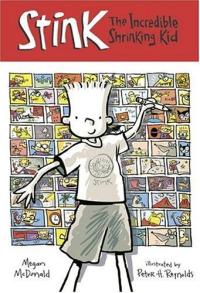Key Information
Focus
When To Use This Strategy
Appropriate Group Size
What is the first lines activity?
First lines is a pre-reading comprehension strategy in which students read the beginning sentences from a book and then make predictions about that book. This technique helps students focus their attention on what they can tell from the first lines of a story, play, poem, or other text. As students read the text in its entirety they discuss, revisit and/or revise their original predictions.
Why use first lines?
- It helps students learn to make predictions about the content of what they’re about to read or what is about to be read to them.
- It helps students focus their attention on what they can tell from the first lines of a story, play, poem, or other text.
How to use first lines
- Choose the assigned reading and introduce the text to your students. Ask students read only the first line of the assigned text, or if using your read aloud, read aloud only the first line.
- Ask your students to make predictions for the reading based on the first sentence.
- Engage the class in discussion about the predictions.
- Encourage your students to return to their original predictions after reading the text, assessing their original predictions and building evidence to support those predictions which are accurate. Students can create new predictions as well.
Just for teachers, just for fun
Watch this NPR story on famous lines from books appropriate for adults.
Collect resources
Download blank template
Differentiate instruction
For second language learners, students of varying reading skill, and younger learners
- Include writing as a way of organizing predictions and/or thoughts generated from discussions.
- Have students work in groups and support each other as they make a prediction.
- Remind students that there is not a “right” or “wrong” way to make predictions about a text.
- Emphasize that they should be able to support their predictions from the information in the sentence.
See the research that supports this strategy
Beers, K. (2003). When Kids Can’t Read — What Teachers Can Do: A Guide for Teachers 6-12. Portsmouth, NH: Heinemann.
Children’s books to use with this strategy

Where The Wild Things Are

The Complete Tales of Winnie the Pooh

Stink the Incredible Shrinking Kid

